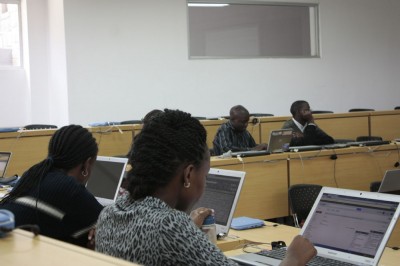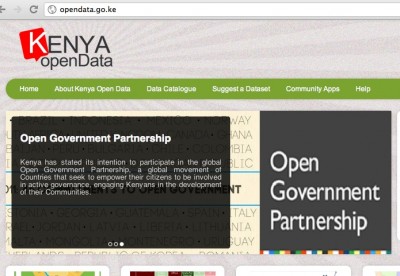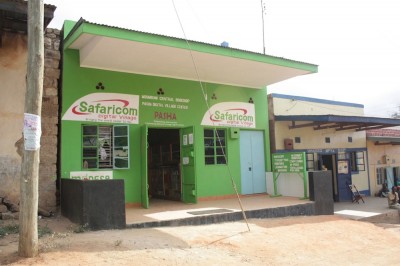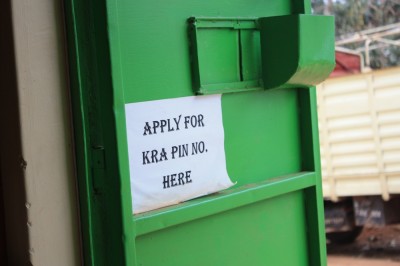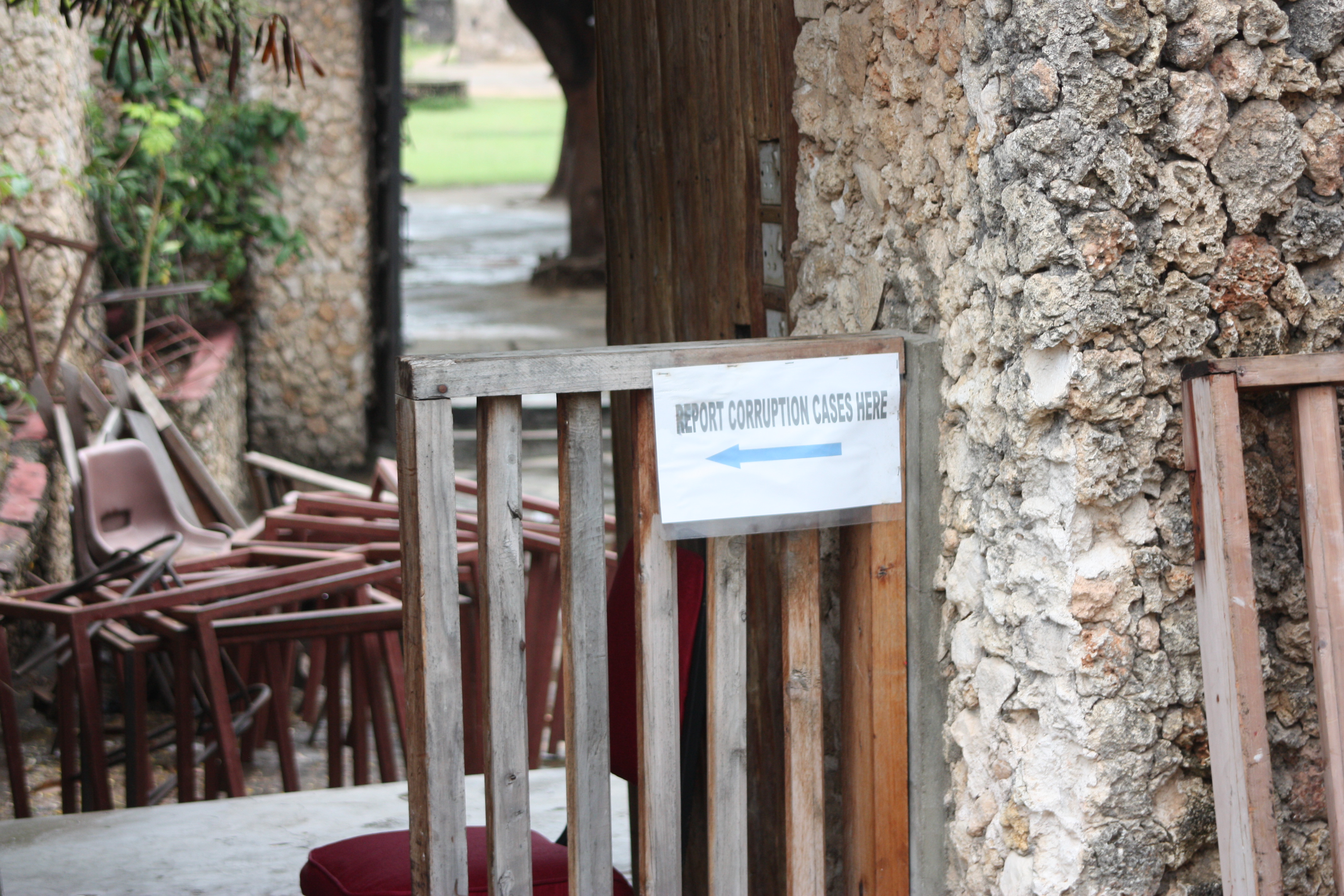Archive for the ‘Mobile’ Category
Message from Africa: We Have Money. We Will Buy.
This is the first of a four-part series on Africa, The Present Frontier.
The usual picture of Africa rarely includes middle class consumers and designer brands. In fact, it rarely portrays the other reality, the true potential that lies on the continent and in its people. Sadly, this robs many western brands off the opportunity to grow their businesses by establishing a presence on the continent. There’s a fast emerging middle class in Africa that has money and aspirations. Are there enough businesses supplying hope and the stuff they dream about?
In April 2011, the African Development Bank released a report on Africa’s Middle Class that showed the floating middle class has grown to over 20% of the population. This segment between the poor and the established middle class, is the only part of the economic pyramid that has had significant growth over the last 20 years achieving 100% growth in the last 30 years. They maybe susceptible to shocks that easily push them back into poverty but unlike their counterparts living in abject poverty, they have money to spend. With a population of 1 billion people, approximately 700million of whom have mobile devices, I can easily suppose a significant number of the floating class are connected. In itself, that is only important to telcos. However, it points to a growing trend everywhere else. An increasingly larger number of people with money to spend on connectivity (for whatever reason) signals a growing appetite for technology and services that connects people. It also signals a narrowing of the digital divide. Among many other signals emmanating from Africa, these two bode well for tech enterprise in Africa. Africa is attractive.
A number of brands in both tech and non-tech sectors have seen the signals from the continent and jumped on the opportunity to achieve phenomenal growth. Here are 7.
- Syngenta recently announced it’s intention to grow its Africa business to $1billion. The firm will invest $500million and grow its workforce by 700 over the next 10 years.
- Diageo has invested $1.5billion in Africa over the last 5 years. Their Kenyan unit, maker of the iconic Tusker beer brand, EABL was one of the first listed firms to breach the $1billion market capitalization milestone.
- Unilever currently earns over $3.5billion a year from its African operations and is working to double that within the next 5 years. A big part of their focus appears to be a push deeper into rural areas where a good number of the floating and middle income population live.
- Visa acquired South African payments firm Fundamo for $110million as part of their strategy to grow their business on the continent. Despite the apparent threat their business faces from mobile payments, Visa sees great potential on the continent and executives contend that mobile payments won’t put them out of business. The acquisition of Fundamo signals their intent to never let mobile out of their sight.
- Samsung grew revenues in Africa to $1.2billion by 2010 and began a push to grow this to $10billion by 2015 with investments of $140million on the continent. Africa is the fastest growing market for mobile phone market in the world.
- Designer cosmetics maker L’Oreal expects Africa’s middle class to double over the next 10 years. It aims to grow its market 10%-20% year on year until it attains a 16% market share in Africa.
- Nokia was until recently the world’s largest mobile phone vendor. It’s number 1 position is now held by Samsung. However, five years ago, Nokia’s sales in Africa were estimated at $7billion (according to Wikinvest). It’s ability to churn out devices that struck a chord with African consumers was legendary and is still one of the continent’s most recognizable brands.
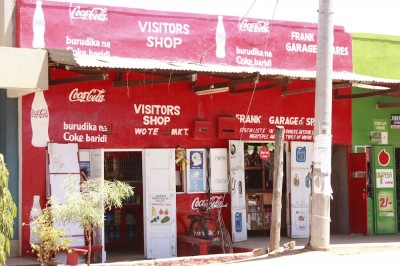
CocaCola branded shop in Kenya's Makueni District. CocaCola is the most successful beverages and FMCG business in sub-Sahara Africa.
Macroeconomic signals emanating from the continent have of course played a big role in attracting foreign investment. GDP growth in African countries touches double digits in some countries, growth rate unlikely to be witnessed in developed economies where economic growth has stagnated for some and shrunk in others (hello Greece!). Driven by agriculture, tourism, minerals and financial services, economies on the continent have outperformed those in the west even during the worst of the recent financial crisis. Sub-sahara Africa in particular has seemed insulated from the chaos in financial markets in the rest of the world. Africa is growing.
Whilst the usual story about Africa has attracted non-profits and social entrepreneurs to the continent, the story of consumer aspirations, economic growth, political stability and an increasingly educated and savvy population has attracted their for-profit counterparts. Some of the social enterprises that have setup shop here have had great success whilst others have come to Africa to die. A good indicator of whether a social enterprise will succeed on the continent is sometimes determined by how effectively it communicates hope to its market. When marketing and communications departments use the same tone for fundraising in the west to sell merchandise in Africa, one can expect dismal results because the tone in the fundraising message is one of hopelessness and desperation.
For-profit enterprises have not had to struggle with this dual-message strategy. Their message is usually ‘Buy my great stuff’ or ‘My stuff will make you great’. Even when they deliver very little hope, it goes a longer way than low prices. Some big brands have learned this the hard way. Expecting to acquire huge market share by adopting a low-margin high-volume business model that was successful in India, Airtel was handed a rude shock by the continent and has had to go back to the drawing board.
As some have suggested, hope can make a big difference to those living in economic hardship sometimes resulting in higher spending. Africa has great aspirations. Some brands have known this all along and have been handsomely rewarded by customers in Africa. Here are two brands that have always had great success with the BoP customer in Africa.
- Safaricom is East Africa’s largest mobile phone company with the world’s most notable mobile money platform, MPesa. Here’s an ad campaign they have been running recently in Kenyan media. Even with the most expensive on-net calls Safaricom remains by far the largest network by subscriber numbers and revenue.
- Coca Cola has been very successful in Africa. Present in 56 countries and territories on the continent and with over 160 bottling plants this soft drinks maker has a distribution channel that is the envy of many in the fast moving consumer goods industry. In places where there is no medication, education or even healthcare, you may still find a Coke. Their advertising seeks to inspire and the results speak for themselves. Here’s an ad currently running on African television as part of their 1 Billion Reasons to Believe in Africa campaign.
Fast growing economies, a fast growing middle class, political stability and a growing ICT sector are current features of Africa that make it a great place to be for those seeking to expand. It is also increasingly attractive for technology businesses that understand the African customer or are willing to take the time to do so. Some of the top performing brands in Africa today understand this and have been on the continent for a long time. While everyone else was talking about Africa being the next frontier they saw Africa as the present frontier. It’s still early enough for businesses to establish a presence with new products and services that have not existed on the continent. Like Wonga launching it’s first international location in South Africa.
Africa is here. The message from Africa to the rest of the world is simple.
Have money. Will buy. Who’s selling?
Workshop: Designing Apps for the Masses in Africa
This past week the Semacraft team was at Strathmore University holding a workshop for the MSc Telecommunications Innovation (Safaricom Academy) students on designing apps for the mass market in Africa. We are grateful to iLabAfrica for making the event possible.
It’s always great being at Strathmore University, the campus has a great sense of And the students have great energy. Our workshop was based on Semacraft’s basic innovation model called p5 which starts with people and keeps the user at the center of the innovation process throughout the service design lifecycle. A key part of the model requires the innovator to identify personas in their market who they would plan to address. It was impressive the number of personas the participants were able to come up with, some who are well represented throughout the planet’s growth markets. The potential for new disruptive ideas does lie among our young innovators. At Semacraft we look forward to being part of the process that brings to the surface the next generation of ideas that change the way people live and work in Africa.
This workshop was the first in a series designed to equip developers with better skills in business design and improve the quality of ideas launched by young tech innovators in East Africa. The workshop series will culminate in the launch of a handbook later in the year. The next workshop will also be at a Kenyan university later this month. Follow us on Twitter to stay updated.
Corporate Big Data Should Team Up With Public Open Data
In the early days of the Obama administration, the idea of open data was transitioned from lofty ideal to a reality pushing huge amounts of government-held data onto public portals. What started in the US, however, became a global process. Many governments have since committed themselves to provide data to their citizens through similar portals and to abide by the principles of open government.
This coming June, Kenya will celebrate one year of open data and a portal that has grown to over 220 datasets and a total of 500 data elements (datasets, documents, charts etc). A number of interesting mobile and web apps have been created that utilize the data such as MedAfrica. Although there have been signs of some cool apps, the number of apps I expected one year on haven’t quite materialized. However, 12 months is a short time and the next couple of years could very well see the rise of novel applications and highly innovative ways of communicating public data to citizens or using it to add value to commercial apps.
Now that the government is publishing data online and will continue to do so as legislation is enacted to further reinforce this, what’s next? I say MORE DATA. Not just government data. It’s time for corporate big data to join the party. The private sector has a wealth of data gathered everyday from citizens around the country. The level of intelligence contained in corporate data is so vast, fresh and detailed I’m certain the staff at the national bureau of statistics salivate at the thought of getting their hands on it. So do local small businesses and start-ups. Although the data held by a single corporate entity on its customers may be detailed and extremely valuable, it becomes even more valuable when taken together with data from other corporate entities. Taken together with public open data, this data is priceless.
Corporate open data could have immense impact on consumer/citizen facing organizations in both for-profit and non-profit sectors. Here are some possibilities that come to mind
- Banking data e.g. insights into average deposit size by county, number of business accounts, penetration of banking services by geographic location and population (percentage of population with bank accounts).
- Consumer goods sales e.g data on consumption of goods by location, trends, average price of most popular product type.
- Telecommunications e.g. Airtime sales by location, average size of airtime purchase, average call length by location, average number of text messages per person by location, number of subscribers accessing the internet via mobile or via other devices etc
- Disease prevalence e.g. data from private healthcare facilities could provide additional information on number of cases diagnosed by disease, location and trends beyond the diseases that are most commonly observed at public facilities.
In an age where information is king, helping communities empower themselves and turn their fortunes around requires access to the right information. Information that allows them to understand why their counties attract low investment, or whether they have the infrastructure to leverage for economic development, or what their political leaders can do to improve their quality of life. The answers to these and many other questions lie not just in government data but in corporate data as well.
Empowering citizens to become more active in their own governance is a key principle of open government and one which open data reinforces well. Empowered citizens make empowered customers and (I’m pretty certain) makes for good business somehow. It is possible that corporate social responsibility on this side of the industrial age may include providing data to the public that could help them change their world. Isn’t that a possibility East African businesses should consider investing in just as their governments are doing?
Government Services Intermediation: The New Role for Cybercafes.
Mbumbuni is a rural market town in Kenya’s Mbooni East District approximately 120km from Nairobi. Within the market is one of the Kenya ICT Board supported Pasha Centers and probably one of the best equiped cybercafes I have seen. When I visited the area in August of 2011, the 3G signal was poor and the center was using a GSM router connecting via EDGE to provide access to clients. The resulting experience was of course poor. For the residents in the area, the next cybercafe with a good connection is in Masii 8km away or in Wote town 50km away. For anyone wishing to register with the tax authority (a prerequisite to opening a bank account), a working cybercafe is the primary mode of accessing the authority’s online portal. There is no way of obtaining the registration at a KRA office. Cybercafes and Pasha centers charge an average of Ksh150 and as high as KSh250 to help clients complete the process and only a per minute charge for those savvy enough to login and do it themselves. For the residents of Mbumbuni, the Pasha center is their first option. Other options are guaranteed to be more expensive.
In the last four months I have travelled to parts of Kenya I only read about. Some of them almost 600 km away from Nairobi and others just an hours drive away. I have seen places where cybercafés are doing great and others where they are struggling to stay open. The landscape is varied but inspiring. Our estimates put the number of cybercafes in Kenya at approximately 2,500 most of them concentrated in the more densely populated parts of the country. Although statistics show a growing number of Internet users (35% of the population at last count), the vast number appear to be using their mobile phone as their primary gateway. Although feature phones can now provide 3G Internet access, play music and take pictures they still can’t print, scan or edit documents. With very low PC penetration in the country the rational decision is to therefore default to cybercafes for these tasks and others not yet available on mobile. Such as eGovernment.
The move by government departments and agencies such as the Kenya Revenue Authority to port services onto online spaces and then discontinue offline provision can be seen as a sign of progress. However, in using eGovernment to scale services fast across large areas at low cost, new barriers to access emerge. Digital barriers and cost barriers. These barriers have created new opportunities for cybercafé owners and Pasha center entrepreneurs allowing them to charge for a service that didn’t exist only a couple of years ago. The cyber café has now acquired a new role as an intermediary to government services introducing with it new costs of intermediation.
Whereas eGovernment presents a new opportunity for private enterprise in the form of new intermediation services, the government still needs to find ways of encouraging telcos to deploy better last mile connectivity (3G, LTE) to rural places where the financial investment may not achieve ROI in the short term. If poor connectivity remains a problem, the services may not be any closer to the people than they were before when the residents of Mbumbuni and Masii had to travel to Machakos, Wote or even Nairobi to get government services. In my opinion, there are three areas the Directorate of eGovernment and other actors in the space may consider giving priority as Kenya marches on into a fully digital future.
Better connectivity. Better 3G or LTE connectivity for the last mile to the cybercafes located in rural areas is a good place to start. Providing better connectivity could trigger consumption of data as people find utility for it. In places such as Maai Mahiu and Isinya we heard from a couple of people how frustrating spotty connections are. In Isinya, 40km from the city of Nairobi, residents opt to travel to Kajiado town or Kitengela rather than endure the local cybercafe’s unreliable connections.
Pricing Interventions / Guidelines. When intermediation services become high enough to become a bona fide barrier to access, there’s a problem. Ksh250 is enough to feed a family of four for a day or two. In areas where government services are only available online, this could mean that some families opt out of crucial government services they shouldn’t be having to do without. The initial premise is to bring services closer to the people. High financial costs neuter that objective. Introduction of price caps that keep it financially interesting for enterpreneurs to provide access to these services while remaining accessible to the majority of the people maybe an option worthy of some consideration.
Design for mGovernment. 24 million mobile devices are hard to ignore. Policy guidelines that allows government departments to design and deploy services on the mobile platform should be a priority in the short term. If bringing services closer to citizens is a priority, the mobile handset is as close as it can get.
As new formal intermediaries to government services begin to emerge with the rollout of new infrastructure and services, governments need to keep everyone in the ecosystem on the same page. Cybercafe owners need to remain motivated to provide the services, government departments need to create and train technical and customer care teams and citizens need to be educated on how to access and utilize these services.
From Open Data to Open Action
“The thing to remember is, Human beings do not socialize in a completely random way. There’s a tangible reason for us being together, that ties us together. Again, that reason is called the Social Object.” Hugh MacLeod
The Open Government Partnership declaration commits members to support civic participation in addition to making data on government activities open to the public. In Africa, Kenya made history as the first country in sub-Sahara Africa to implement an open data initiative giving citizens unprecedented access to valuable datasets. 40 countries, 5 of them African countries, have since signed up to the OGP and I believe they are at different levels of following through on the spirit of the declaration.
The value of open data to citizens is unquestionable. This year, Kenyan software developers have launched mobile apps that leverage open data to provide services to citizens. They have mostly been in the healthcare and agriculture verticals but services in education and entertainment have begun to emerge. These are very encouraging signals coming out of a country that only a decade or two ago made it almost impossible for citizens to know what the government was doing. These apps may not have been possible without access to the huge amount of data the government holds and is now making available to software developers.
However, we shouldn’t think of only mobile and the web when we talk about leveraging open data. “To turn raw data into ‘edible’ content that citizens can consume and make decisions with” should be the overarching objective for anyone looking to improve citizen participation in governance through open data. This edible bits of content should be easily consumed on the now ubiquitous mobile devices in Africa as well as on old fashioned news print and billboards. Jyri Engestrom refers to social networks as “object-centered sociality” meaning people connect because they have a reason to and that reason is usually an object (in the loose sense of the word). Moving from mere intentions to action may start with little more than an object (physical or otherwise).

